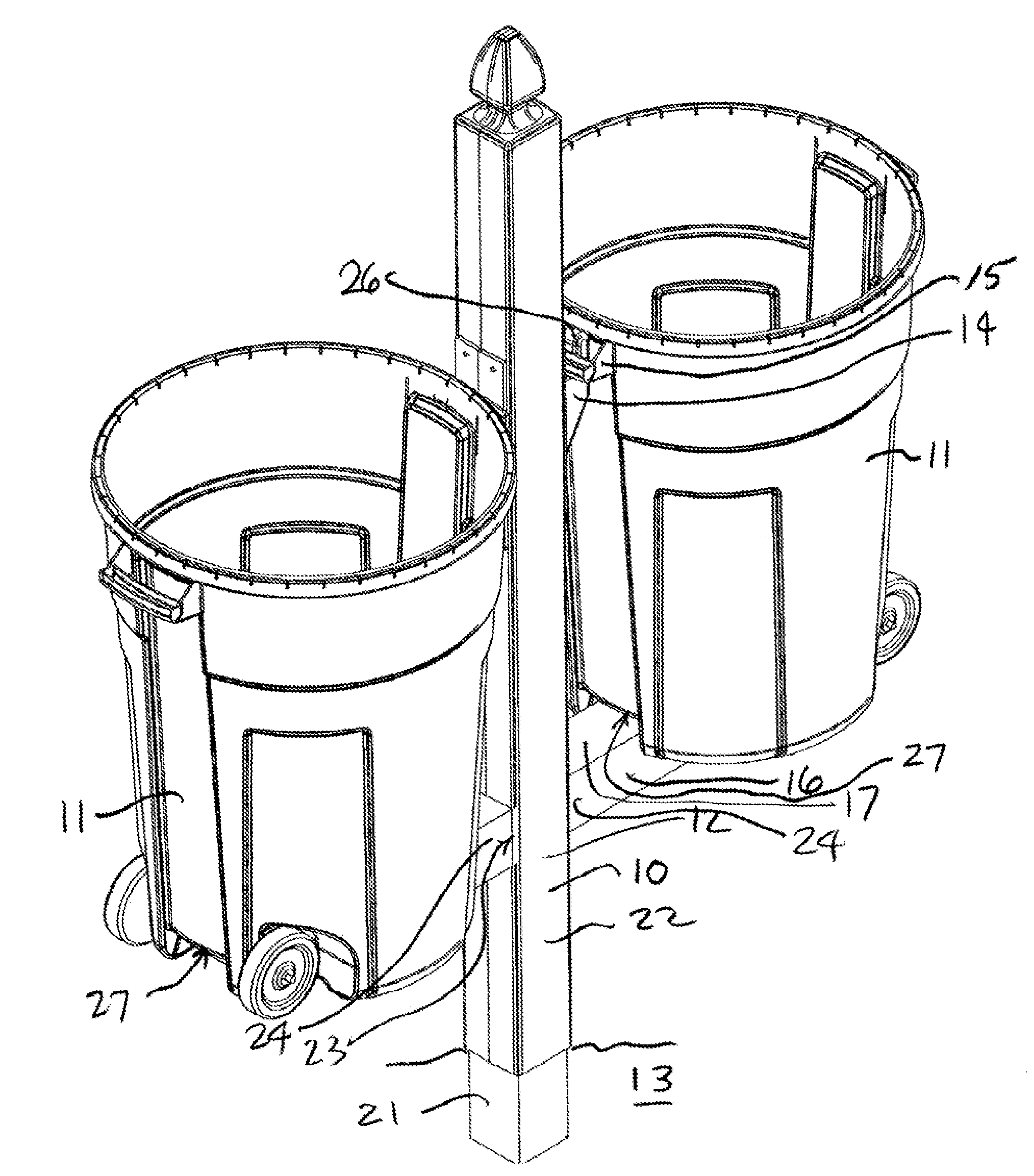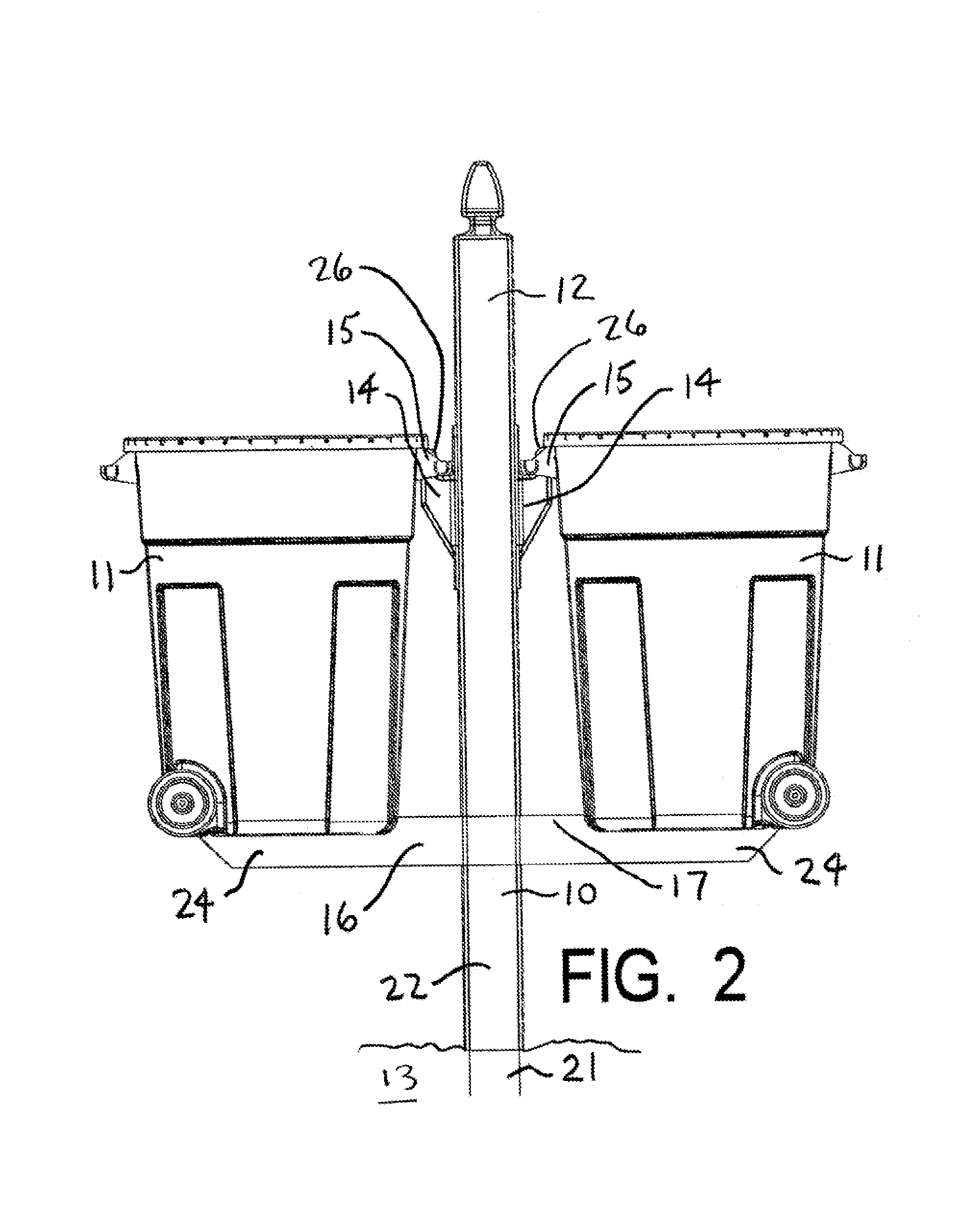Refuse container holder system
a technology for storing containers and containers, applied in the field of storing containers, can solve the problems of inability to inability to meet the needs of users, so as to facilitate maintenance, improve appearance, and hold and physically stabilize containers
- Summary
- Abstract
- Description
- Claims
- Application Information
AI Technical Summary
Benefits of technology
Problems solved by technology
Method used
Image
Examples
first embodiment
[0056]The installation of the first embodiment of the invention, as shown in FIG. 11, begins by installing a base element 21 into the ground 13, with an exposed end extending 8 to 12 inches above the ground surface. The base element would typically be 4 in. by 4 in. pressure treated wood.
[0057]As shown in FIG. 12, the vertical element casing 22, typically a hollow piece of plastic, would then be slipped over the exposed end of the base element 21. The vertical element casing is provided with diametrically opposed openings 23. The vertical element casing 22 and base element 21 would be positioned so that the lower edges of the openings 23 aligned with the upper surface of the base element 21. Then, the vertical element casing 22 would be fastened to the base element 21 with nails or screws to form the vertical element 12. The vertical element casing 22 would carry the upwardly facing hooks14.
[0058]As shown in FIG. 13, the horizontal element 16 is slid through the openings 23 in the v...
second embodiment
Alternative Second Embodiment
[0065]In any variation on the details of the second embodiment and its installation, as shown in FIG. 20, the base element 21a is installed just as had been shown in FIG. 15.
[0066]As shown in FIG. 21, the horizontal element 16a is then slipped over the base element 21a.
[0067]As shown in FIG. 22, the vertical element casing 22a including integral or preinstalled upwardly directed hooks 14a, is slipped over the base element 21a, and slid between the base element 21a and the horizontal element 16a. Then the vertical element casing 22a is fastened to the base element 21a using nails or screws. Then, the horizontal element 16a is positioned appropriately with respect to the upwardly directed hooks 14.
[0068]As shown in FIG. 23, a container 11 is placed on the horizontal element 16a with a handle 15 on the container 11 encircling the pin 26a of one of the upwardly directed hooks 14a on the horizontal element casing 22a. A groove 27 in the bottom of the contain...
PUM
 Login to View More
Login to View More Abstract
Description
Claims
Application Information
 Login to View More
Login to View More - R&D
- Intellectual Property
- Life Sciences
- Materials
- Tech Scout
- Unparalleled Data Quality
- Higher Quality Content
- 60% Fewer Hallucinations
Browse by: Latest US Patents, China's latest patents, Technical Efficacy Thesaurus, Application Domain, Technology Topic, Popular Technical Reports.
© 2025 PatSnap. All rights reserved.Legal|Privacy policy|Modern Slavery Act Transparency Statement|Sitemap|About US| Contact US: help@patsnap.com



